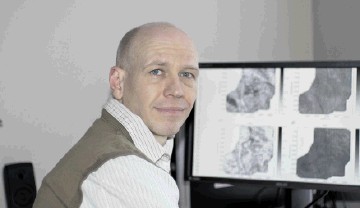
Phase two of a joint industry project that focused on identifying advanced techniques developed by the signal processing research community and applying them to seismic processing problems, with the ultimate aim of easing the detection of by-passed hydrocarbons and aiding identification of satellite fields, has just been concluded.
The work received support from two operating companies with assistance from ITF, the Aberdeen-based technology facilitator for the global oil and gas industry.
The latest phase of the project, titled BLISS (Blind Identification of Seismic Signals) was kicked off in 2010, and was a collaboration between the Department of Physics at the University of Alberta, and the Jean Kuntzmann Laboratory in Grenoble – an applied mathematics and computer science laboratory that focuses on the application of computational and statistical sciences and their uses in analysing natural phenomena.
Detection of bypassed hydrocarbons and new satellite fields is important with respect to field life extension in mature areas such as the North Sea, and the ease with which we can detect these additional reserves depends predominantly on the quality and resolution of the seismic data available for interpretation.
The researchers set out to identify state-of-the-art techniques in advanced signal processing that have been largely ignored by the geophysical community, but carry promise for a step change in seismic processing algorithms, particularly with respect to increasing the signal-to-noise ratio of seismic data, and extracting features of interest.
Dr Mirko van der Baan, BLISS project manager and Associate Professor of Exploration Seismology at the University of Alberta, explained the thinking behind their approach.
“Our aim was to evaluate and adapt these techniques for advanced data processing and noise reduction to render them suitable for increasing the quality and resolution of conventional seismic data,” he told Energy.
“This should produce novel statistical signal processing tools for high resolution imaging of small-scale structures, thereby leading to an increased confidence in the interpretation of current and new exploration prospects.
“The two main approaches within the BLISS project related to local signal enhancement and robust wavelet estimation for blind “deconvolution” in order to achieve the highest quality and resolution feasible.
“Blind deconvolution is a technique that can be used to separate out the seismic source signature, that is, the explosion or air gun signature, from the true geology, without having any knowledge of either signal.”
Prof van der Baan added that it is a technique that the communication industry is interested in to enable more effective use of bandwidth by separating out voice patterns from the actual spoken words prior to compressing both.
If one relates that to exploration seismology, the voice patterns would be equivalent to the source signature and the spoken words – the geology.
Colin Sanderson, senior technology analyst at ITF, said that, as the oil and gas industry has developed so have its requirements with respect to the quality of information and level of detail that can be extracted from the vast quantities of data that seismic surveys collect.
Consequently, it has been a high priority for ITF since the organisation was established out of the Oil & Gas Industry Task Force initiative of the late 1990s.
“The output from this project, some of which is already being used by the sponsors, will result in processing software that can be applied on a range of datasets including legacy data, new 3D seismics and repeat 4D surveys for exploration, appraisal and exploitation purposes, and may thus contribute to the discovery of new satellite fields as well as enabling progress of oil recovery from mature fields to be tracked,” said Sanderson.
The current research will be continued at the University of Alberta. Prof van der Baan is also heavily involved in research into microseismic monitoring of hydraulic fracturing of tight-hydrocarbon fields and monitoring of steam-injection into heavy-oilfields, both in terms of improved understanding of the underlying geomechanical processes as well as data quality enhancement.